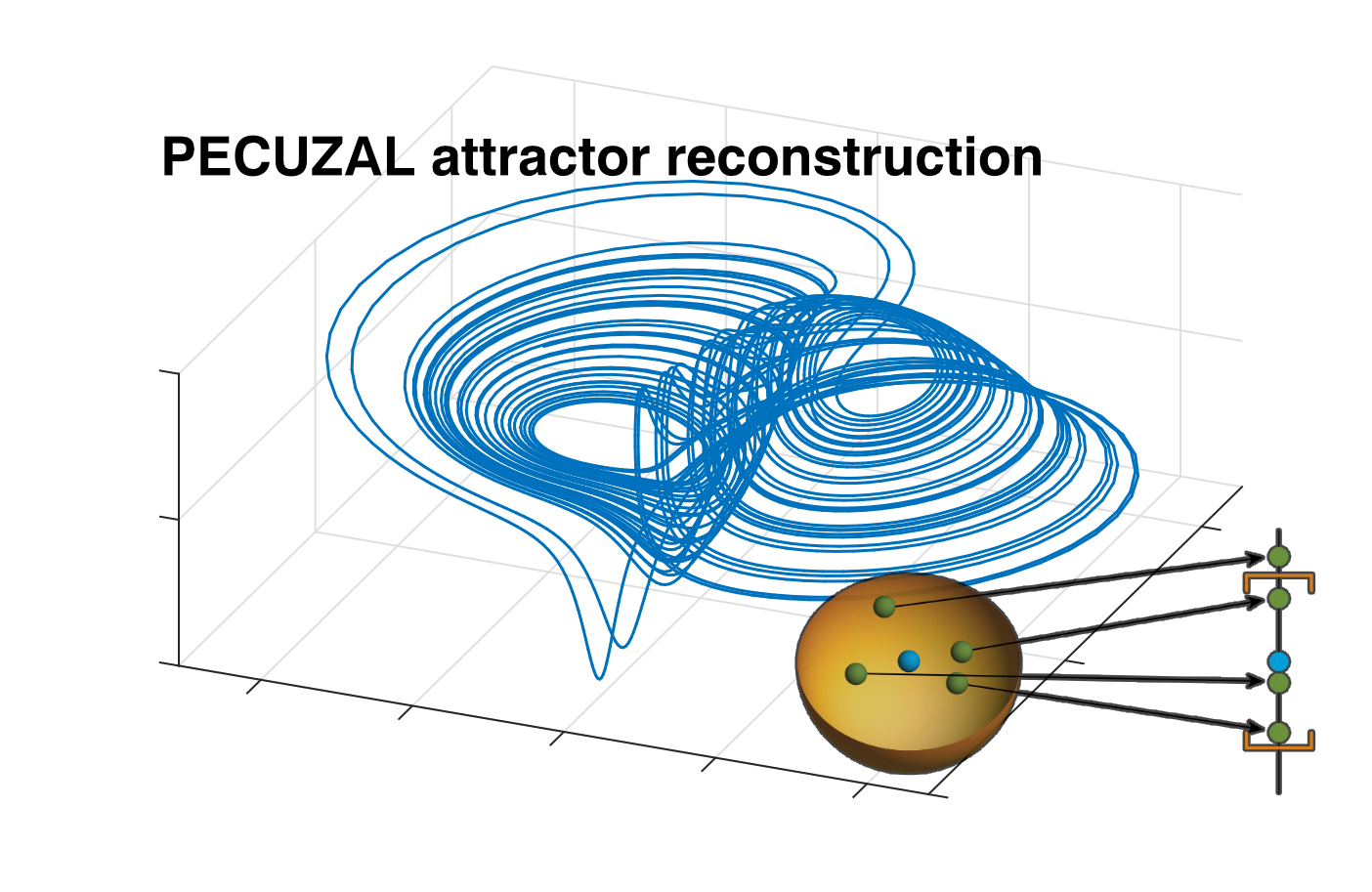Welcome to PECUZAL automatic embedding for Python’s documentation!¶

We introduce the PECUZAL automatic embedding of time series method for Python. It is solely based on the paper [kraemer2021] (Open Source), where the functionality is explained in detail. Here we give an introduction to its easy usage in three examples. Enjoy Embedding!

Getting started¶
Install from PyPI by simply typing
pip install pecuzal-embedding
in your console.
Note
This implementation is not profiled well. We recommend to use the implementation in the Julia language or in Matlab, in order to get fast results, especially in the multivariate case. Moreover, it is well documented and embedded in the DynamicalSystems.jl ecosystem. For instance, the compuations made in the Univariate example and the Multivariate example in this documentation took approximately 800s (approx. 13 mins.) and 4700s (approx. 1 hour and 10 mins!), respectively, even when using the econ option in the function call, which accelerates the computation time. In the Julia implementation the exact same computation took 4s and 25s, respectively! (running on a 2.8GHz Quad-Core i7, 16GB 1600 MHz DDR3)
Usage and examples
Source functions
Citing and reference¶
If you enjoy this tool and find it valuable for your research please cite
- kraemer2021
Kraemer et al., “A unified and automated approach to attractor reconstruction”, New Journal of Physics 23(3), 033017, 10.1088/1367-2630/abe336, 2021.
or as BiBTeX-entry:
@article{Kraemer2021,
doi = {10.1088/1367-2630/abe336},
url = {https://doi.org/10.1088/1367-2630/abe336},
year = 2021,
month = {mar},
publisher = {{IOP} Publishing},
volume = {23},
number = {3},
pages = {033017},
author = {K H Kraemer and G Datseris and J Kurths and I Z Kiss and J L Ocampo-Espindola and N Marwan},
title = {A unified and automated approach to attractor reconstruction},
journal = {New Journal of Physics},
abstract = {We present a fully automated method for the optimal state space reconstruction from univariate and multivariate time series. The proposed methodology generalizes the time delay embedding procedure by unifying two promising ideas in a symbiotic fashion. Using non-uniform delays allows the successful reconstruction of systems inheriting different time scales. In contrast to the established methods, the minimization of an appropriate cost function determines the embedding dimension without using a threshold parameter. Moreover, the method is capable of detecting stochastic time series and, thus, can handle noise contaminated input without adjusting parameters. The superiority of the proposed method is shown on some paradigmatic models and experimental data from chaotic chemical oscillators.}
}
Licence¶
This is program is free software and runs under MIT Licence.